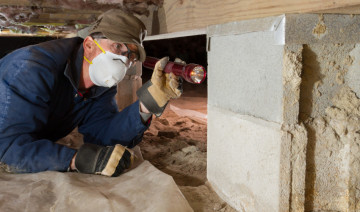
Navigating the Depths: A Comprehensive Guide to Accurate Crawl Space Conversion
Crawl spaces, once overlooked and underutilized, are increasingly becoming valuable spaces in homes. Converting a crawl space can provide additional square footage, improve energy efficiency, and enhance the overall functionality of your home. However, a successful crawl space conversion requires careful planning, consideration of various factors, and adherence to local building codes. In this blog post, we'll explore the steps and considerations involved in accurately converting a crawl space, transforming it from a neglected area into a functional and valuable part of your home.
- Assessment and Planning:
Before diving into a crawl space conversion, conduct a thorough assessment. Identify the structural integrity, moisture levels, and any existing issues that need addressing. Develop a comprehensive plan outlining the purpose of the converted space—whether it's for storage, a home office, or an additional bedroom.
- Moisture Control:
Moisture is a common issue in crawl spaces, and addressing it is crucial for a successful conversion. Install proper vapor barriers on the crawl space floor and walls to prevent moisture from seeping in. Consider installing a dehumidifier to maintain optimal humidity levels.
- Insulation:
Proper insulation is essential for creating a comfortable and energy-efficient space. Insulate the walls and floor of the crawl space to regulate temperature and prevent heat loss. Choose insulation materials that are resistant to moisture and pests.
- Ventilation:
Evaluate the crawl space's ventilation needs. Ensure that there is proper airflow to prevent stagnant air and reduce the risk of mold growth. Install vents strategically to facilitate cross-ventilation and consider adding a ventilation fan for enhanced air circulation.
- Structural Considerations:
Consult with a structural engineer to assess the load-bearing capacity of the crawl space. Ensure that any modifications or additions comply with local building codes and regulations. Reinforce the foundation if necessary to support the intended use of the converted space.
- Electrical and Plumbing Considerations:
If your crawl space conversion involves adding electrical outlets or plumbing fixtures, consult with professionals to ensure compliance with building codes. Hire licensed electricians and plumbers to handle these installations safely and efficiently.
- Access and Egress:
Consider the accessibility and safety of the converted crawl space. Ensure there is a proper entry and exit point, especially if the space is intended for habitation. Install a sturdy and code-compliant access door or hatch.
- Flooring and Finishing:
Choose flooring materials suitable for the intended use of the space. Consider moisture-resistant options, especially if the crawl space is prone to dampness. Finish the walls and ceiling with materials that enhance the aesthetics while meeting practical considerations.
- Heating and Cooling:
Evaluate the need for heating and cooling in the crawl space. Depending on the climate and the intended use, consider adding a small HVAC system or space heaters to maintain a comfortable temperature.
- Compliance and Permits:
Before initiating any conversion work, check with your local building department to determine the necessary permits and ensure compliance with zoning regulations. Failure to obtain proper permits can result in costly fines and complications.
Converting a crawl space is a transformative project that can add both functionality and value to your home. By carefully assessing and addressing issues related to moisture control, insulation, ventilation, structural considerations, electrical and plumbing needs, access and egress, flooring, and compliance with local regulations, you can accurately and successfully convert your crawl space into a valuable and comfortable extension of your living space. Always consult with professionals as needed to ensure a safe and code-compliant transformation.


